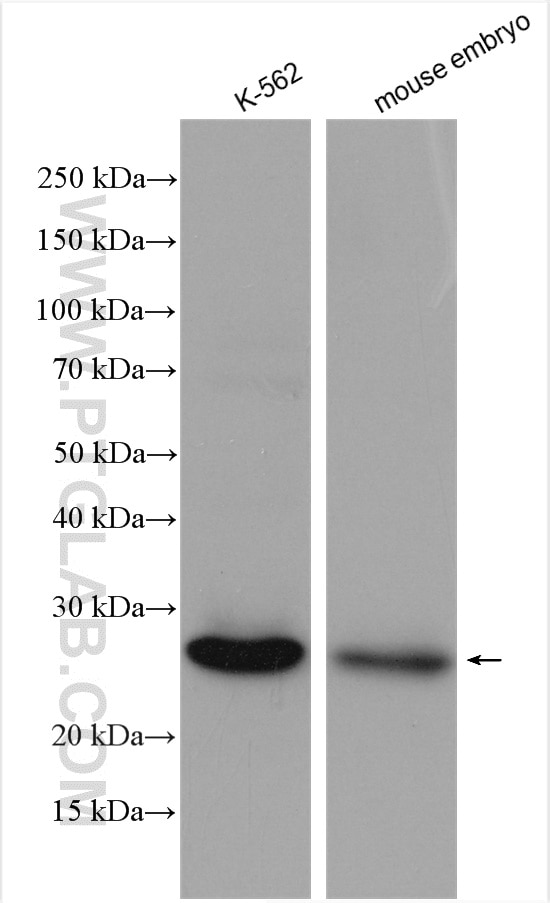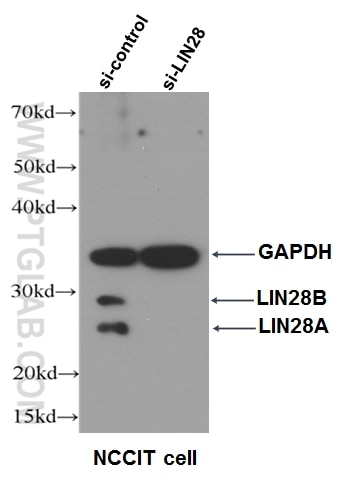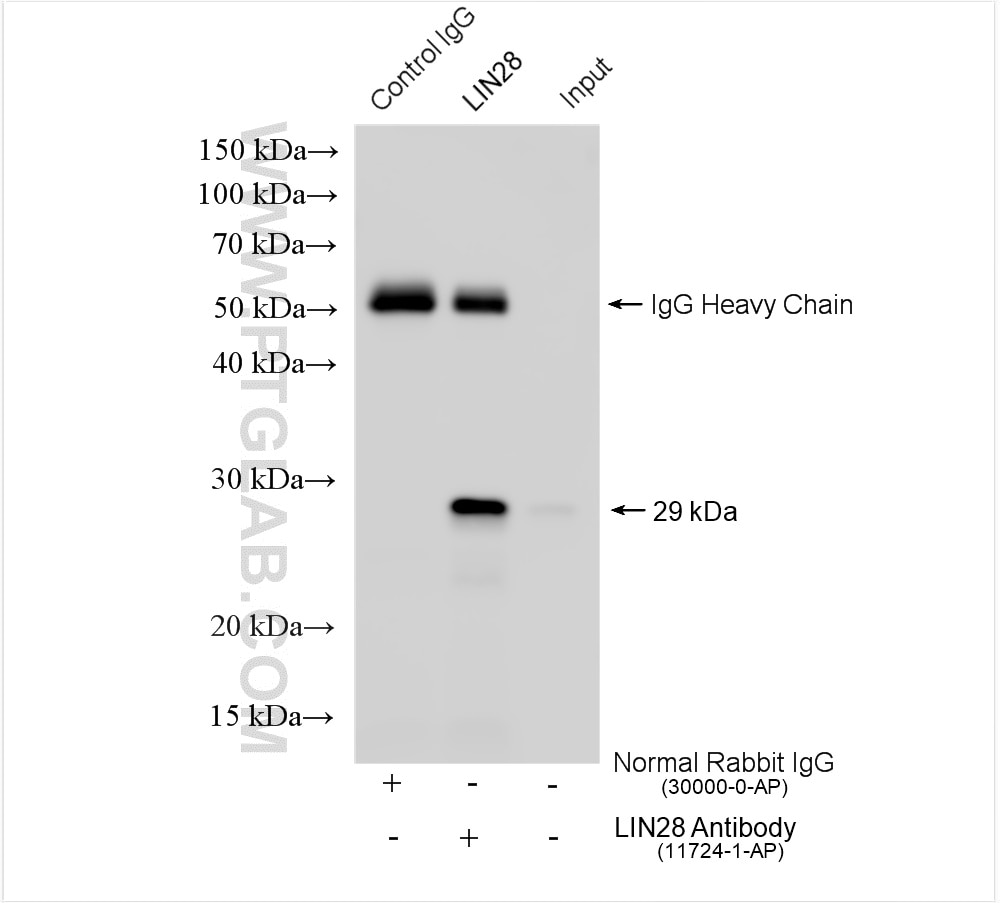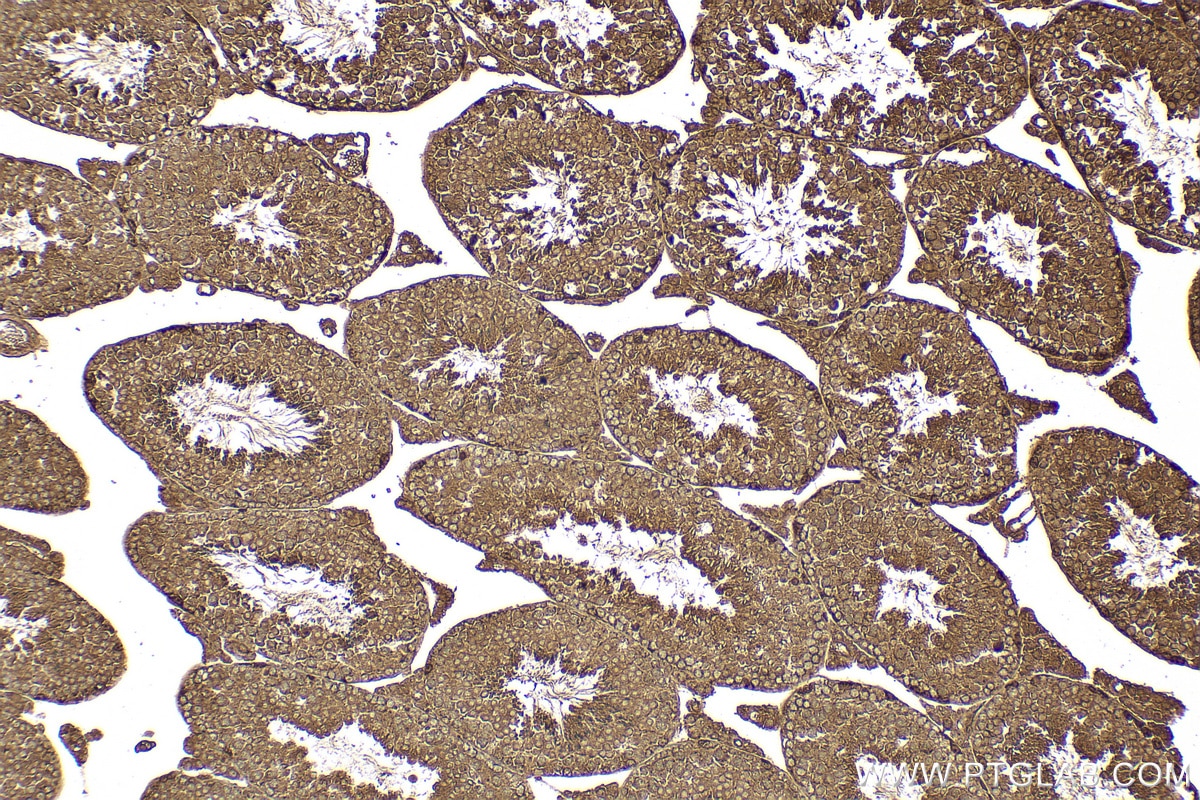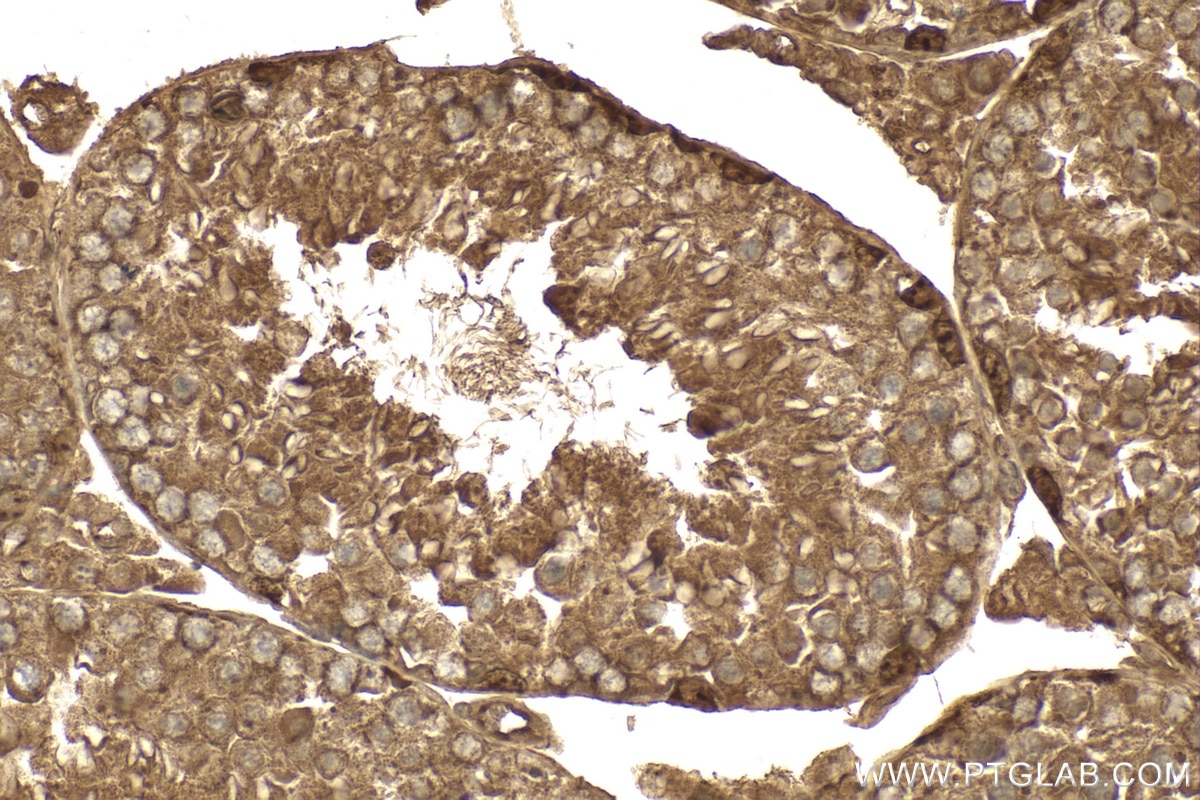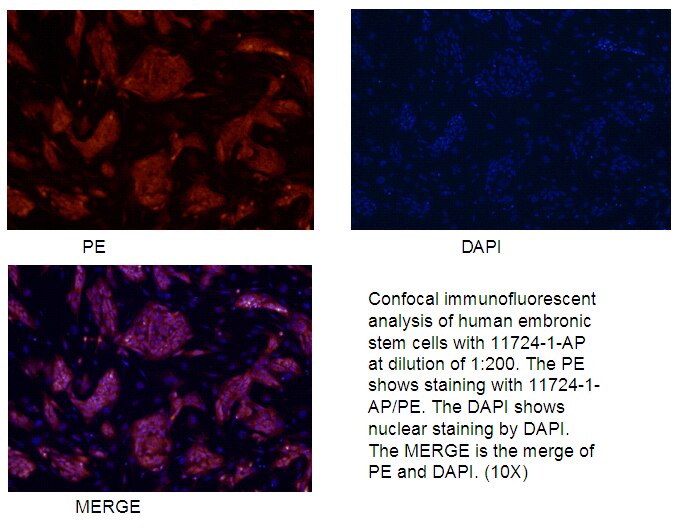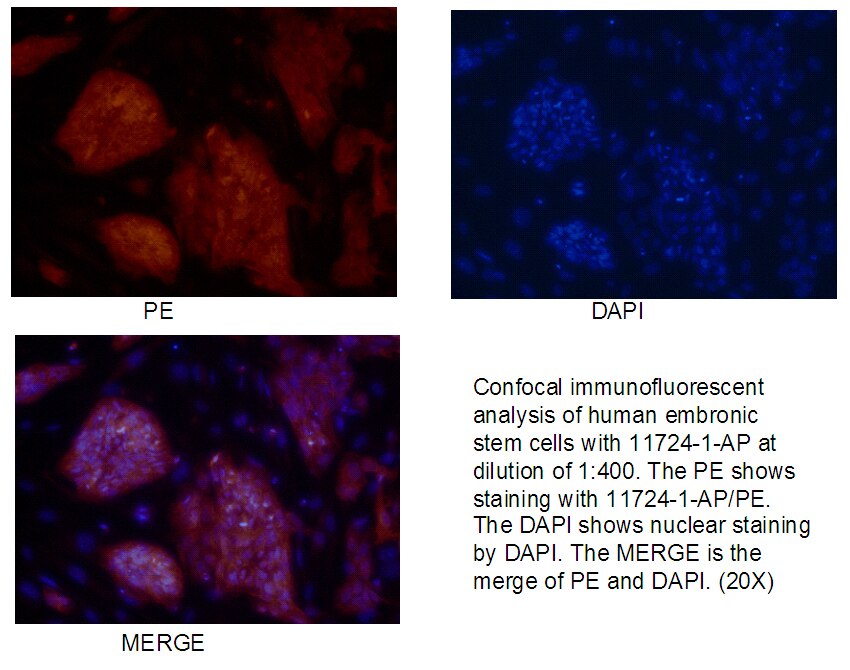- Featured Product
- KD/KO Validated
LIN28A Polyklonaler Antikörper
LIN28A Polyklonal Antikörper für WB, IHC, IF/ICC, IP, ELISA
Wirt / Isotyp
Kaninchen / IgG
Getestete Reaktivität
human, Maus, Ratte und mehr (1)
Anwendung
WB, IHC, IF/ICC, IP, RIP, ELISA
Konjugation
Unkonjugiert
Kat-Nr. : 11724-1-AP
Synonyme
Geprüfte Anwendungen
| Erfolgreiche Detektion in WB | K-562-Zellen, Mausembryogewebe, NCCIT-Zellen |
| Erfolgreiche IP | K-562-Zellen |
| Erfolgreiche Detektion in IHC | Maushodengewebe Hinweis: Antigendemaskierung mit TE-Puffer pH 9,0 empfohlen. (*) Wahlweise kann die Antigendemaskierung auch mit Citratpuffer pH 6,0 erfolgen. |
| Erfolgreiche Detektion in IF/ICC | humane embryonale Stammzellen |
Empfohlene Verdünnung
| Anwendung | Verdünnung |
|---|---|
| Western Blot (WB) | WB : 1:1000-1:8000 |
| Immunpräzipitation (IP) | IP : 0.5-4.0 ug for 1.0-3.0 mg of total protein lysate |
| Immunhistochemie (IHC) | IHC : 1:50-1:500 |
| Immunfluoreszenz (IF)/ICC | IF/ICC : 1:20-1:200 |
| It is recommended that this reagent should be titrated in each testing system to obtain optimal results. | |
| Sample-dependent, check data in validation data gallery | |
Veröffentlichte Anwendungen
| KD/KO | See 2 publications below |
| WB | See 29 publications below |
| IHC | See 18 publications below |
| IF | See 14 publications below |
| IP | See 2 publications below |
| RIP | See 1 publications below |
Produktinformation
11724-1-AP bindet in WB, IHC, IF/ICC, IP, RIP, ELISA LIN28A und zeigt Reaktivität mit human, Maus, Ratten
| Getestete Reaktivität | human, Maus, Ratte |
| In Publikationen genannte Reaktivität | human, Hund, Maus, Ratte |
| Wirt / Isotyp | Kaninchen / IgG |
| Klonalität | Polyklonal |
| Typ | Antikörper |
| Immunogen | LIN28A fusion protein Ag2312 |
| Vollständiger Name | lin-28 homolog (C. elegans) |
| Berechnetes Molekulargewicht | 209 aa, 23 kDa |
| Beobachtetes Molekulargewicht | 28 kDa |
| GenBank-Zugangsnummer | BC028566 |
| Gene symbol | LIN28 |
| Gene ID (NCBI) | 79727 |
| Konjugation | Unkonjugiert |
| Form | Liquid |
| Reinigungsmethode | Antigen-Affinitätsreinigung |
| Lagerungspuffer | PBS with 0.02% sodium azide and 50% glycerol |
| Lagerungsbedingungen | Bei -20°C lagern. Nach dem Versand ein Jahr lang stabil Aliquotieren ist bei -20oC Lagerung nicht notwendig. 20ul Größen enthalten 0,1% BSA. |
Hintergrundinformationen
LIN28 is one of the four key human factors (OCT4, SOX2, NANOG and LIN28) used to reprogram human fibroblasts to an embryonic stem (ES) cell-like state known as the induced pluripotent stem (Ips) cell[PMID: 20139967]. LIN28 is a marker of undifferentiated human embryonic stem cells and a cytoplasmic mRNA-binding protein that binds to and enhances the translation of the IGF2 mRNA[PMID: 21057460]. LIN28 has also been shown to bind to the let-7 pre-miRNA and block production of the mature let-7 microRNA in mouse embryonic stem cells[PMID: 22078496]. Affinity purified rabbit anti-LIN28 can be used to demonstrate pluripotency of ES and Ips cells, and to detect LIN28 transgene expression in the process of reprogramming. This antibody is a rabbit polyclonal antibody raised against full length LIN28 of human origin. The calculated molecular weight of LIN28 is 23 kDa, but the modified LIN28 is about 28 kDa.
Protokolle
| PRODUKTSPEZIFISCHE PROTOKOLLE | |
|---|---|
| WB protocol for LIN28A antibody 11724-1-AP | Protokoll herunterladen |
| IHC protocol for LIN28A antibody 11724-1-AP | Protokoll herunterladenl |
| IP protocol for LIN28A antibody 11724-1-AP | Protokoll herunterladen |
| STANDARD-PROTOKOLLE | |
|---|---|
| Klicken Sie hier, um unsere Standardprotokolle anzuzeigen |
Publikationen
| Species | Application | Title |
|---|---|---|
Nat Genet Lin28 promotes transformation and is associated with advanced human malignancies. | ||
Nat Genet Lin28a transgenic mice manifest size and puberty phenotypes identified in human genetic association studies. | ||
Cell Stem Cell Human iPSC-Derived Neural Progenitors Are an Effective Drug Discovery Model for Neurological mtDNA Disorders. | ||
Cell Res Ythdc2 is an N(6)-methyladenosine binding protein that regulates mammalian spermatogenesis. |
